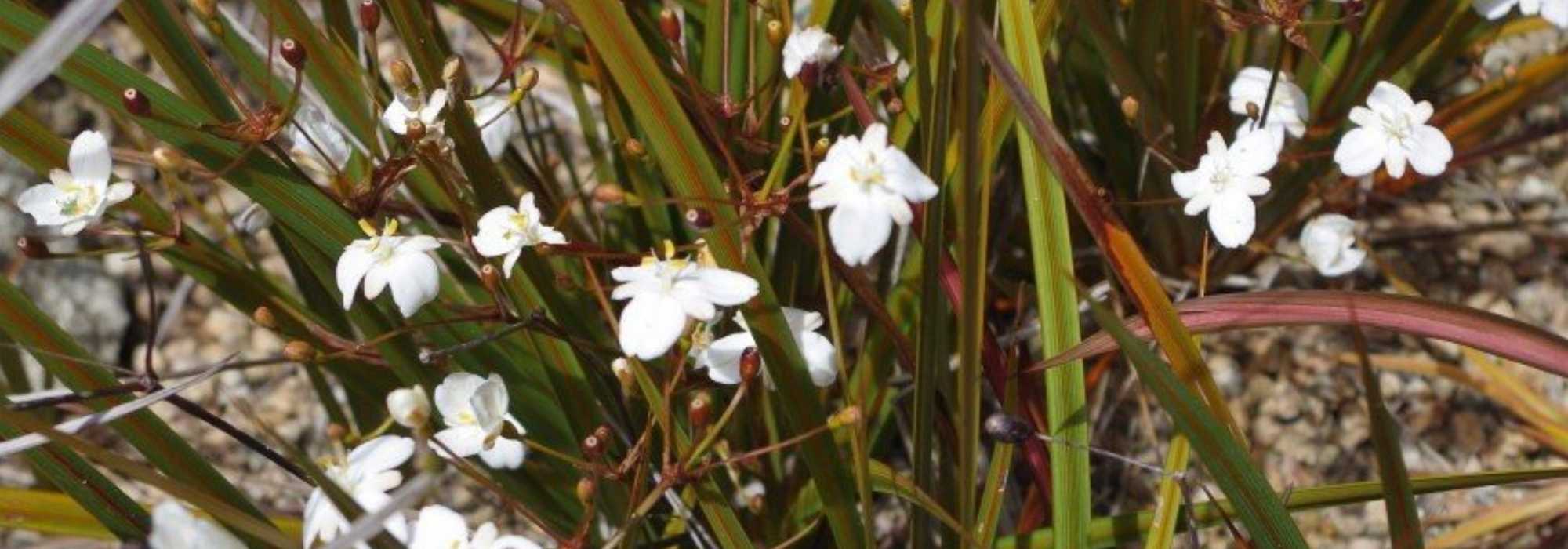
Libertia: planting, growing
Contents
Libertia in a nutshell
- Libertia is a stunning perennial plant with a graphic and structural habit that grows in clumps
- It is highly ornamental due to its evergreen foliage, either uniform or variegated, with a very exotic appearance, and its colours intensify in winter
- Hardy down to -7/-8°C, it is an essential plant for seaside gardens
- It thrives in any good well-drained garden soil in winter, preferably without lime
- It is ideal for enhancing the edges of water features, pathways, and rockeries
A word from our expert
Libertia, sometimes referred to as ‘New Zealand Iris’, is a hardy perennial that forms beautiful upright clumps adorned with grass-like foliage topped in spring by delicate white flowers. Throughout the year, its long sword-shaped leaves attract particular attention with their vibrant colours: in autumn and winter, they take on sumptuous fiery hues.
Whether it’s the Libertia grandiflora (the largest!), the Libertia formosa (the hardiest!), the Libertia peregrinans with its stunning bronze to orange colour, or the Libertia ixioides ‘Goldfinger®’, notable for its bright yellow-orange hue, all of them structure the space and add a touch of exoticism! They adapt to all settings, whether by water features, in pathway or border plantings, in rockeries, or even on the terrace.
This highly graphic perennial is sensitive to frost, preferring the mild climates of our Atlantic coasts. Libertia is perfect for gardens spared from severe frosts, such as coastal gardens. Elsewhere, it can be grown in a pot, which can be brought indoors in winter to a conservatory or greenhouse.
It is easy to grow in full sun or partial shade, in any rather acidic and well-drained, even dry, soil.
Discover our collection of Libertia to brighten up your garden with its colourful leaves!
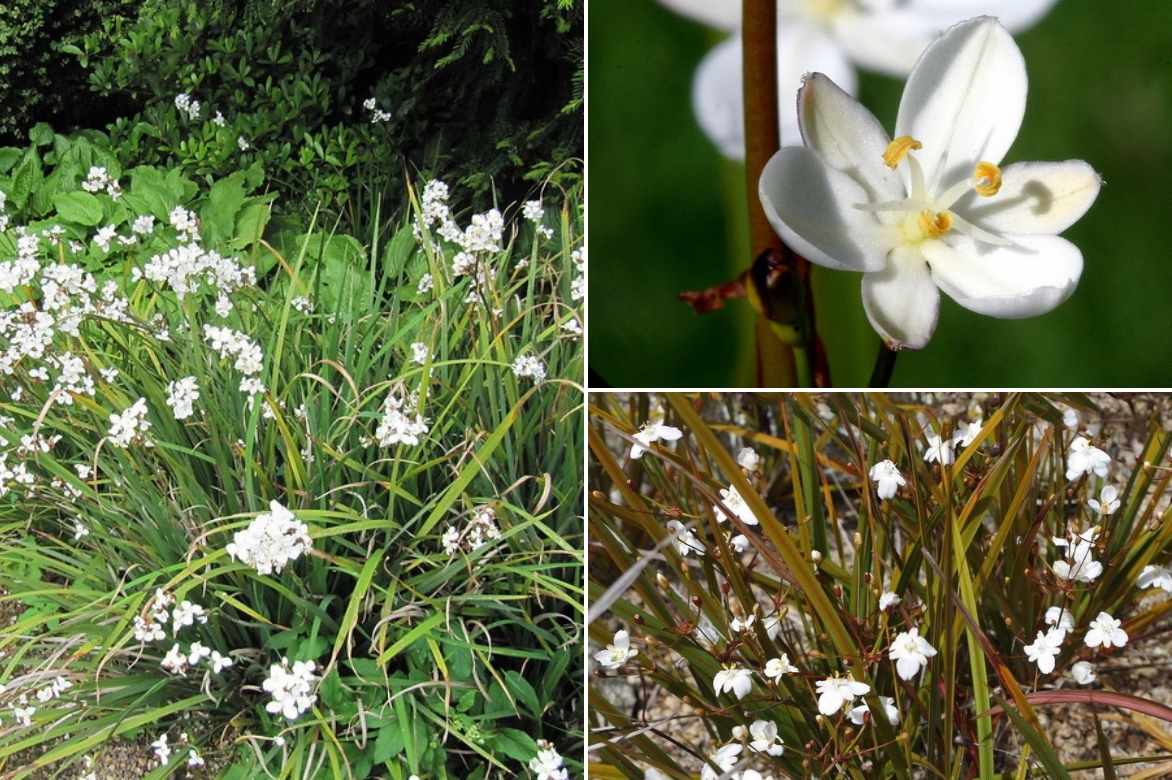
On the left, aerial Libertia grandiflora with hostas (Photo: L. Enking); on the right, the flower and bronze foliage of Libertia peregrinans (Photo: T. Foster)
Botany
Botanical data
- Latin name Libertia
- Family Iridaceae
- Common name New Zealand Iris
- Flowering June-July
- Height 40 cm to 1.20 m
- Exposure Sun, Partial shade
- Soil type well-drained, moist
- Hardiness -8°C
Libertia, sometimes called New Zealand Iris, is a rhizomatous perennial belonging to the Iridaceae family. Native to the grassy meadows of New Zealand, Australia, and the Chilean Andes, it is easy to acclimatise in many regions that are not too cold.
The genus Libertia comprises around twenty perennial species, including Libertia formosa and Libertia grandiflora, both hardy down to -10/-12°C. The Libertia peregrinans is more tender and will acclimatise better in our coastal regions. The Libertia ixioides has produced beautiful cultivars selected for their unique tricolour foliage, offering a wide range of variegations.
It grows moderately quickly from a rhizomatous and suckering rootstock. It forms a compact, upright clump that spreads in all directions, reaching heights of 40 cm to 1.30 m for Libertia grandiflora, with a width of about 30 to 60 cm. Cultivars are generally less vigorous than their parents and offer intermediate heights of around 30 to 40 cm. Over time, the clump thickens thanks to its rhizomes.
Libertia is an interesting perennial for its very graphic, gramineous, evergreen foliage. It consists of linear, ribbon-like, thin and narrow leaves, erect and sword-shaped towards the sky, resembling those of irises. Imbricate in a fan shape, they evoke long ribbons measuring 30 to 70 cm in length and 0.3 to 1.5 cm in width.
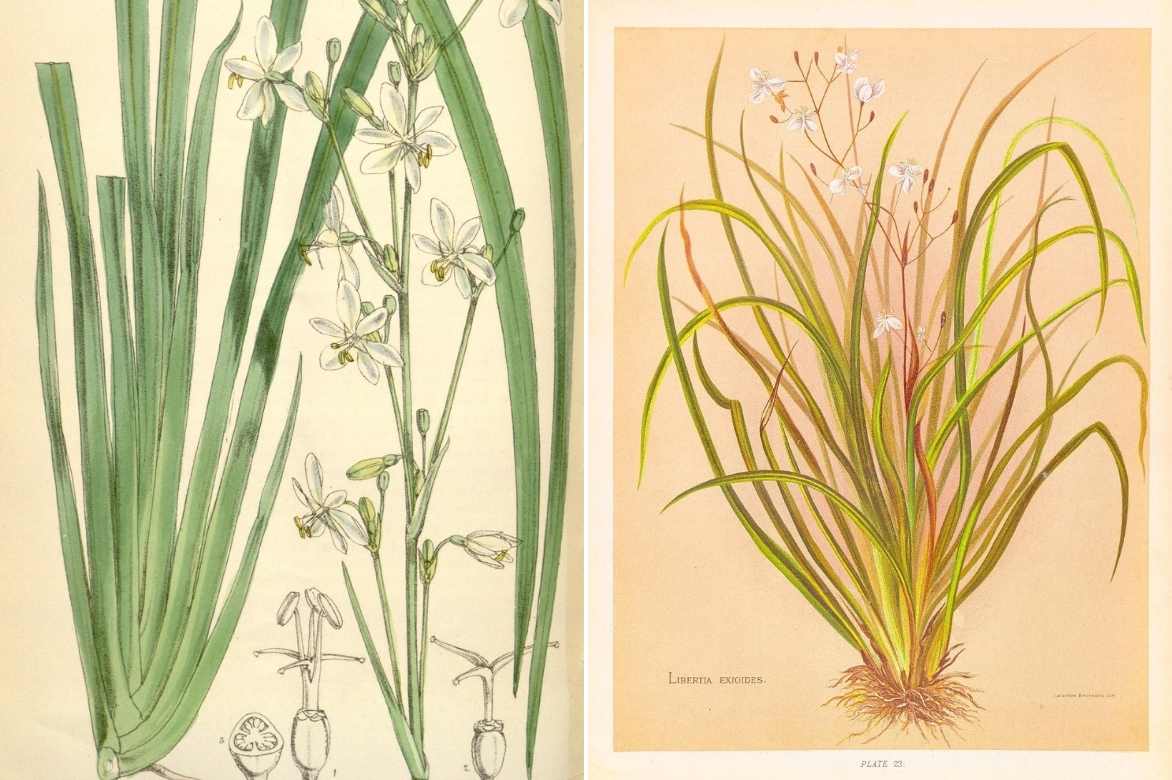
Botanical plates: Libertia paniculata (left), and Libertia ixioides (right)
The type species, Libertia grandiflora and Libertia ixioides, which are very similar, have produced numerous cultivars offering sumptuously variegated or subtly striped colours. If Libertia grandiflora has dark green leaves, Libertia ixioides ‘Goldfinger®’ stands out with its yellow-green foliage striped with yellow and orange. The Libertia ixioides ‘Taupo Sunset®’ and ‘Taupo Blaze®’ charm with their long, multicoloured, changing leaves that blend bronze green, yellow, and orange, taking on purple-violet, red, or brown hues in the cold.
In late spring and early summer, the plant is illuminated by a very delicate white flowering. Carried by slender stems well above the foliage clump, loose panicles of 2 to 10 immaculate white flowers appear. They consist of 3 petals and 6 sepals measuring 1.5 to 3 cm in diameter, arranged in a staggered pattern and enclosed in bracts. The centre of the corolla releases a bouquet of yellow stamens.
This highly nectariferous flowering attracts numerous foraging insects, including bees and butterflies.
It is followed by the formation of decorative fruits, dehiscent capsules that are swollen and bright yellow, turning brown-black, containing round black seeds that germinate very easily.
“`
Read also
Climate zones and USDA zones in FranceSpecies and varieties
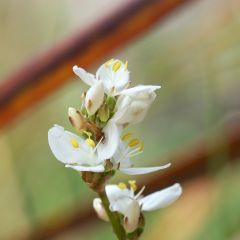
Libertia grandiflora
- Flowering time June, July
- Height at maturity 1 m
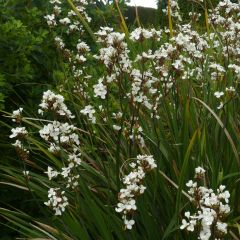
Libertia formosa
- Flowering time July, August
- Height at maturity 1,20 m
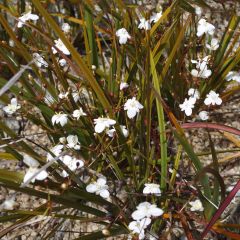
Libertia peregrinans
- Flowering time July, August
- Height at maturity 45 cm
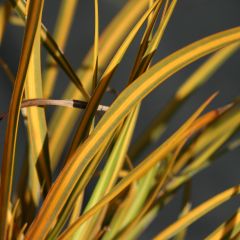
Libertia ixioides Goldfinger
- Flowering time July, August
- Height at maturity 40 cm
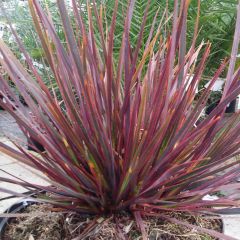
Libertia ixioides Taupo Sunset
- Flowering time July, August
- Height at maturity 40 cm
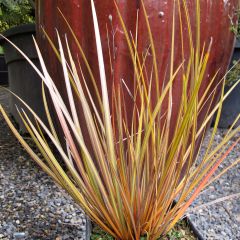
Libertia ixioides Taupo Blaze
- Flowering time July, August
- Height at maturity 40 cm
Discover other Libertia
View all →Available in 2 sizes
Available in 1 sizes
Available in 1 sizes
Available in 1 sizes
Available in 1 sizes
Available in 1 sizes
Available in 2 sizes
Available in 2 sizes
Planting Libertia
Where to plant?
The New Zealand Iris is a beautiful, moderately hardy perennial. Somewhat frost-sensitive, it can withstand temperatures down to -7°C in the ground, sometimes even lower (up to 10°C), when mulched in well-drained, porous soil. It is easy to grow in the ground in regions where frosts are not too harsh. Wind and spray resistant, it makes a good plant for coastal areas, thriving in high humidity. In harsher climates, it can be planted in a pot and brought indoors for the winter.
It should be planted in full sun in any ordinary, fresh but well-drained soil, preferably fertile and humus-bearing, even if dry, and free of lime.
It will ideally settle at the edge of a water feature, on the banks of a pond, either as a solitary plant or in groups, but also along pathways. After a few years, it will gradually spread, and its silhouette will become more pronounced: ensure you provide enough space.
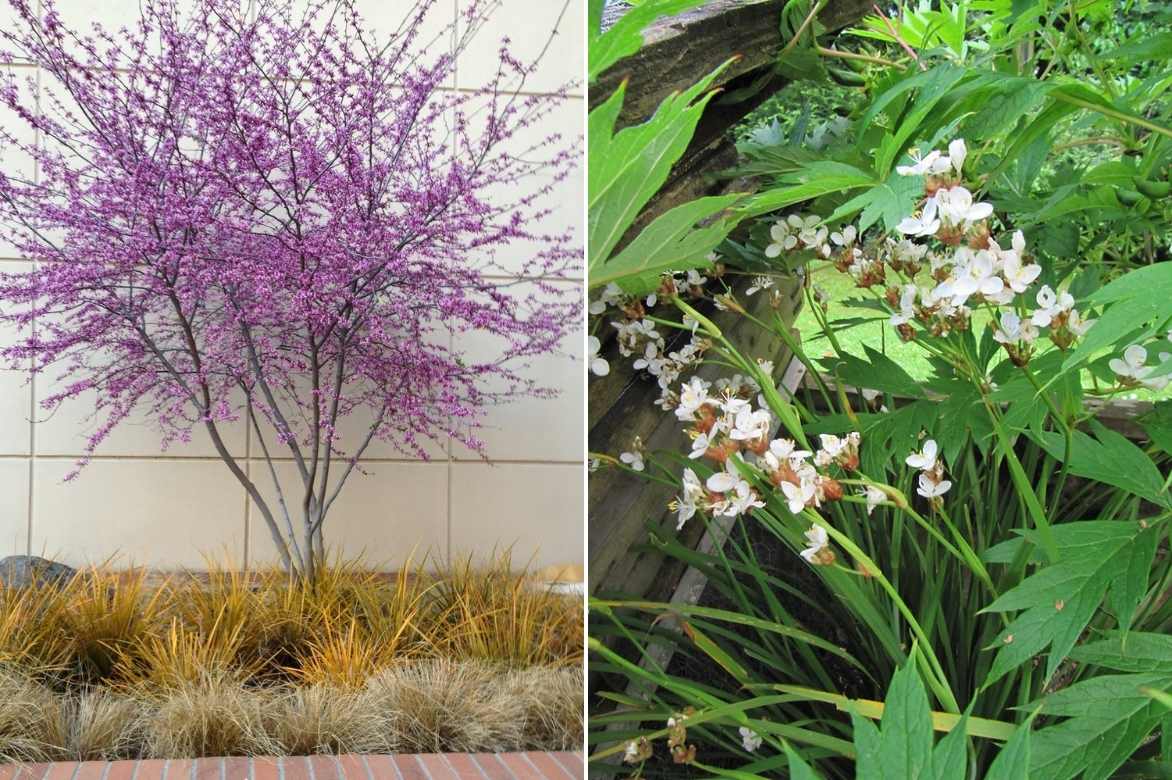
Libertias beautifully accompanying a Judas tree (Photo: Chuck), and Libertias grandiflora by the water’s edge (Photo: L. Enking)
When to plant?
Planting of Libertia is preferably done in spring, from March to April or from July to September.
How to plant?
In well-drained soil, Libertia will be more resistant to frost.
In the ground
- Loosen the soil well
- Dig a hole 2 to 3 times the size of the root ball
- Add a good layer of gravel at the bottom of the hole to improve drainage
- Plant in a mixture of garden soil and a bit of compost
- Fill the hole and then lightly compact it with your foot
- Mulch around the base with wood chips and water generously at planting, then regularly during the first year
In a pot
The substrate should be rich enough and very draining to ensure good root aeration and avoid moisture that could cause rot. Place it in a sunny location, in a large pot of at least 50 cm in diameter.
- Spread a good layer of drainage material (gravel or clay balls) at the bottom of the container
- Plant in a mixture of potting soil and slightly sandy garden soil
- Mulch around the base
- In summer, water as soon as the substrate is dry (about once a week)
→ Learn more about growing Libertia in pots in our advice sheet.
Maintenance, pruning and care
Libertia is a perennial that is easy to grow in regions where frosts are not too harsh. It is also a plant that is resistant to diseases as well as to parasitic issues.
During the first two summers, ensure it does not lack water: the root should remain cool. Once well established, it will tolerate a periodically dry soil. You will then only water in case of prolonged drought.
Cut the flower spikes at the end of flowering to prevent self-sowing and trim any damaged or wilted foliage during the season.
In very cold climates, protect the stump with a dry mulch to insulate it from severe frosts.
New Zealand irises grown in pots require more attention. Water generously during the growth period: the soil should never dry out completely nor be waterlogged.
Bring the pot indoors to protect it from frost in autumn in cold regions and reduce water supply in winter, allowing the soil to dry out between waterings.
Multiplication
Dividing clumps of Libertia allows for the multiplication of the plant, as with all perennials, the young plants tend to lose vigour over the years. Carry out in spring.
- Using a spade, dig out clumps while avoiding damaging the roots.
- Replant the clumps in individual pots or in the ground in a well-draining mix.
- Fill in, firm down well, and then water regularly until growth resumes.
Pairing ideas
With its opulent, graphic foliage that remains beautiful all year round, Libertia lends itself to numerous uses; in rockeries, containers, borders of beds or paths, cascades, streams, and banks. It allows for a beautiful garden even in winter with its persistent foliage. It integrates into all contemporary gardens, wild or natural gardens, and even in water gardens, providing relief, colour, and depth throughout the four seasons. It structures the decor, adding an exotic or contemporary touch to the garden or terrace.
In a mineral and minimalist garden, it is easy to pair with Asian plants, such as Japanese Herbs, Phormium, or with grasses like Calamagrostis x acutiflora ‘Karl Foerster’, creating stunning displays of persistent foliage.
In a seaside garden, it will be perfect with Pittosporum tenuifolium ‘Tom Thumb’.
In a perennial bed, it will accompany heathers, Hostas, Lithodora, Sisyrinchium, Camassia, Crocosmia, Liatris, or even red clover.
On a not too arid slope, it will thrive alongside periwinkles and hellebores.
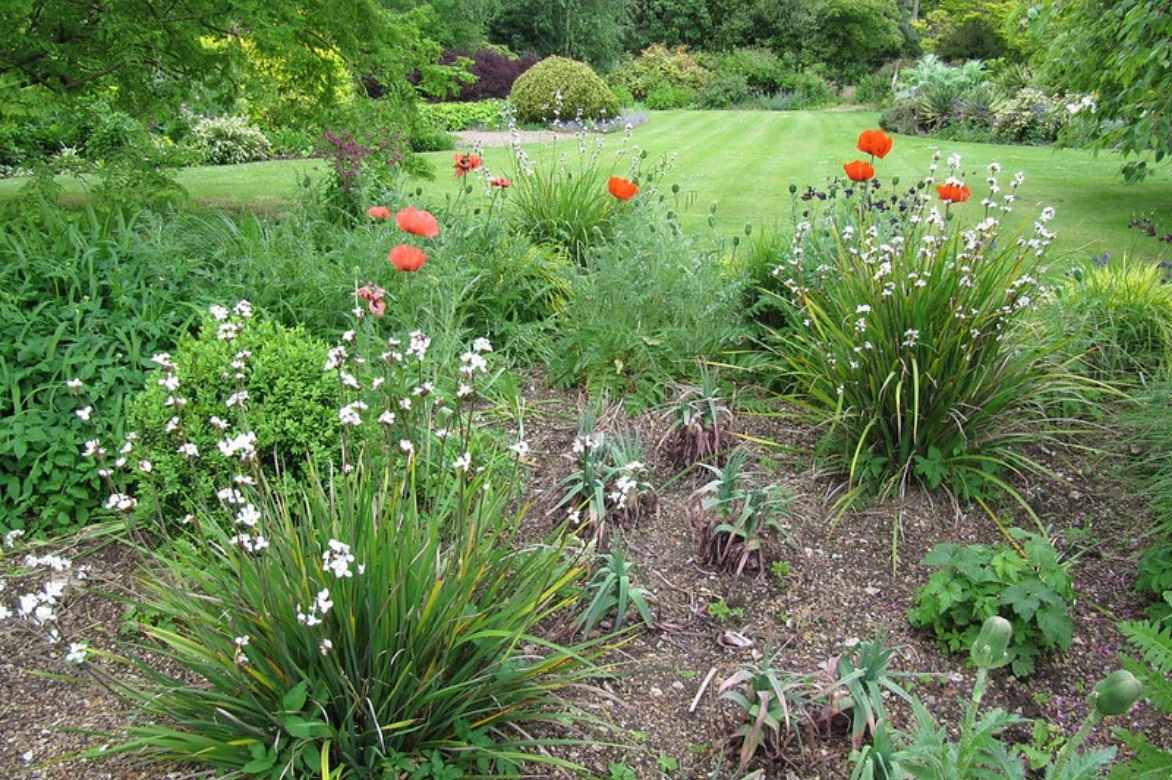
Clumps of libertias in a bed accompanied by poppies (Photo: L. Enking)
→ Discover more association ideas with Libertias
Useful resources
- The vegetation of the banks offers a wide choice for the gardener: discover our collection of perennial plants for cool to moist soil
- Discover association ideas with Libertias
- Subscribe!
- Contents


































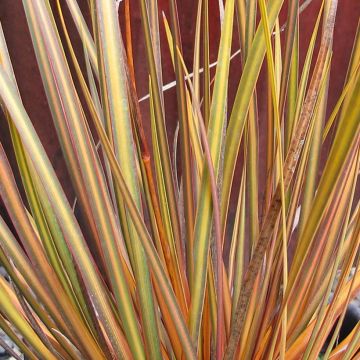

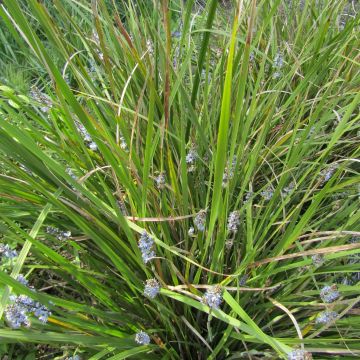


Comments